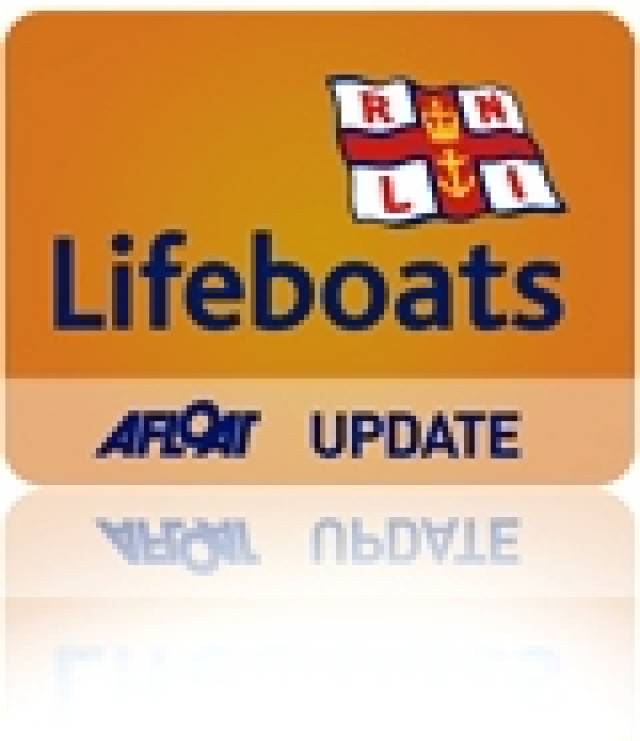#RNLI - Arranmore RNLI was involved in an epic 12-hour rescue in difficult weather of five fishermen on board a crabber which got into difficulty on St Patrick’s Day.
The station’s all-weather lifeboat was launched at 1.45pm to go to the assistance of the 15-metre fishing vessel which had lost power some 40 miles north west of Arranmore due to a rope getting tangled in the propellers. The five crew members on board the boat were not in immediate danger.
Arriving on scene at 4.30pm, the lifeboat crew, under second coxswain Jimmy Early, established a tow line and proceeded to escort the stricken vessel into Burtonport. However, due to a heavy five-metre swell, the journey was slowed down by the tow line breaking.
Arranmore RNLI volunteer lifeboat press officer Nora Flanagan said: "This was a long callout for all concerned, but our lifeboat crew was delighted that they were able to assist the five crew members and bring them and their fishing vessel safely to shore which they did shortly before 2am this morning (Monday 18 March)."
This was the first long-haul callout for Arranmore’s newest and youngest crew member, 17-year-old Dominic Boyle. The second youngest crew member - Leigh Early, son of coxswain Jimmy - was also on the call.
Meanwhile, three crew members from Courtown RNLI have been presented with animal welfare awards for their bravery in rescuing a woman and her dog from Courtown Harbour last December.
As previously reported on Afloat.ie, the 29-year-old woman got into difficulty when she attempted to rescue her Jack Russell, Holly, from the freezing water off Courtown pier.
The North Wexford Society for the Prevention of Cruelty to Animals (SPCA) awarded David Switzer, Aine Stafford and Fintan O’Donoghue for their efforts in rescuing the woman and her dog.
Colin Webb, chairman of the animal welfare group, said the society took strength from seeing examples of great compassion towards animals in the community.































































